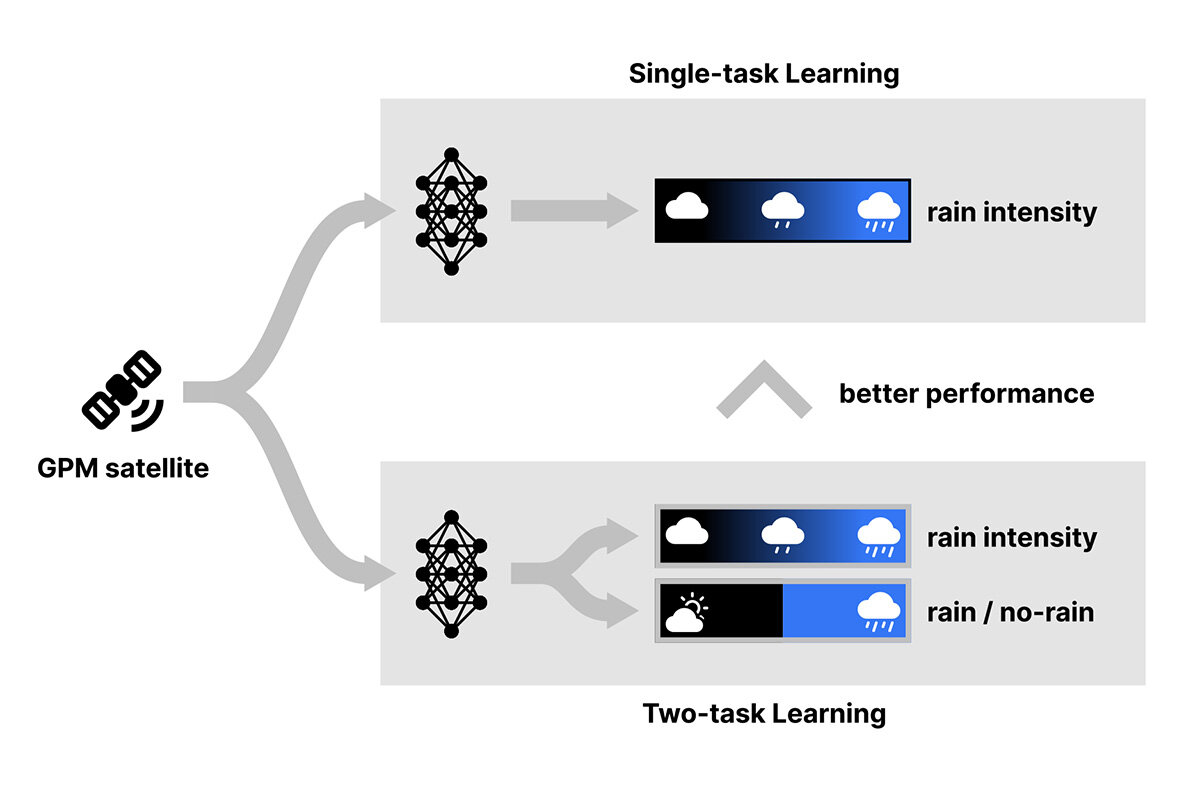
Concentrating on one thing at a time might seem like a good strategy when you're trying to learn something. But now, researchers from the Institute of Industrial Science, The University of Tokyo, have found that simultaneously learning two tasks helps a deep-learning model perform better on both when retrieving precipitation information from satellite data.
Knowing where it's raining and how much rain is falling around the globe is critical information in fields like climate research, water-resource management, and weather forecasting. This information can be obtained from the passive microwave image data of low Earth-orbiting satellites, but rainfall must be identified and estimated from the raw data.
"Recently, deep-learning approaches based on two networks have achieved good results," says Takumi Bannai, lead author of the paper. "However, our aim was to apply multi-task learning to this problem to see if we could further improve performance."
Conventional deep-learning approaches divide the task into two stages. The first determines whether rain is falling in an area and is solved using a classification network, which outputs classes such as "rain" or "no rain." The second determines the amount of rain falling. It employs a regression network, which outputs a numerical value instead.
By contrast, the multi-task learning network is a single network with two output nodes, one for classification and one for regression. The network was first briefly trained on the classification task ("rain" or "no rain"), then briefly trained on the regression task (rain intensity), and finally trained on both tasks until convergence.
This approach was compared with a regression-only model and existing rainfall estimation products. Data from the Global Precipitation Measurement mission, an international network of satellites that has measured precipitation since 2014, were used. The proposed method retrieved rates of rain that were more accurate than the rates of other approaches. "We believe that the model obtained these results because it's able to transfer or share knowledge across tasks," says corresponding author, Hyungjun Kim, also affiliated with the Korea Advanced Institute of Science and Technology (KAIST). "This indicates that multi-task learning is a good way to improve our deep-learning models, especially when the tasks are based on the same physical mechanisms, as in this case."
In the future, the researchers plan to extend the model to consider even more tasks, such as rain-type classification. Another exciting possibility is to use multi-task learning to incorporate prior knowledge about cloud microphysics. For now, the new framework can be used to improve current estimates of precipitation from satellite data.
The article, "Multi-Task Learning for Simultaneous Retrievals of Passive Microwave Precipitation Estimates and Rain/No-Rain Classification," was published in Geophysical Research Letters.
Research Contact
KIM Hyungjun, Project Associate Professor
Institute of Industrial Science, the University of Tokyo
Tel:+81-3-5452-6382
E-mail:hjkim (Please add "@iis.u-tokyo.ac.jp" to the end)
